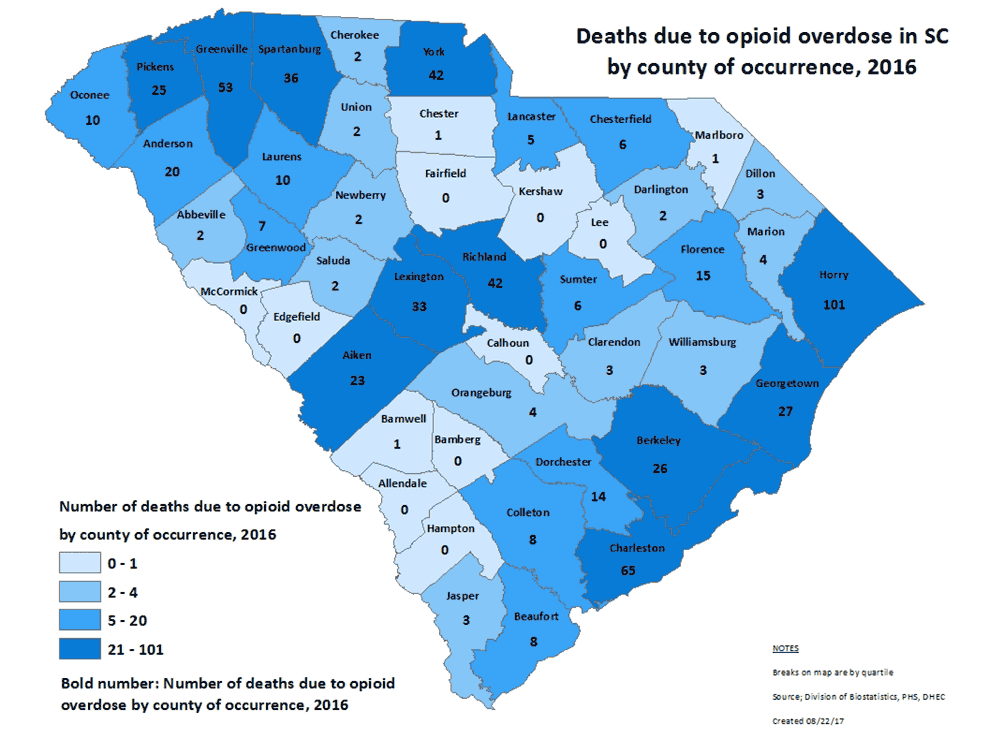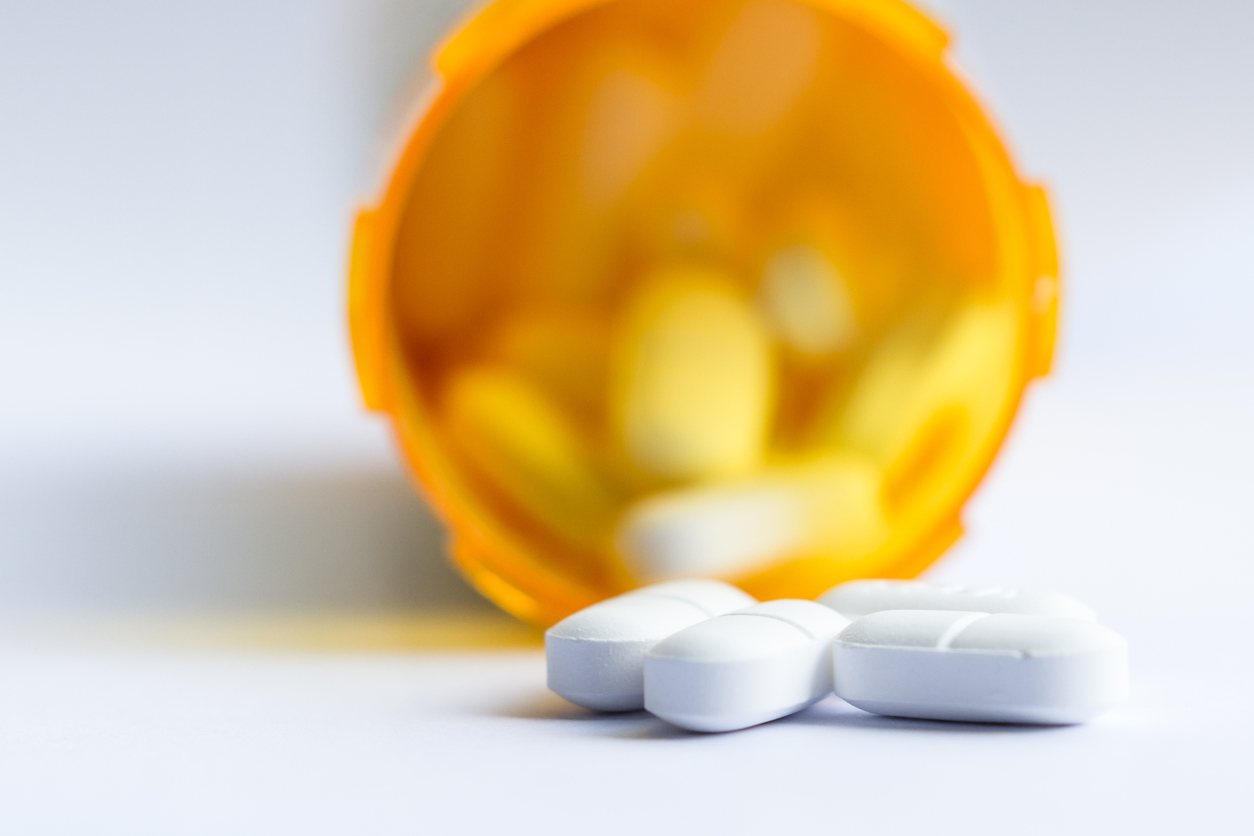Opioid overdoses climbed by 29.7 percent from July of 2016 through September of 2017, according to a report released this week by the U.S. Centers for Disease Control and Prevention (CDC).
The report was based on emergency room data from 45 states – although statewide data for 2017 remains unavailable in our home state of South Carolina.
According to the latest numbers provided by the S.C. Department of Health and Environmental Control (SCDHEC), however, 550 deaths occurred the Palmetto State “from a drug overdose with prescription opioid drugs listed on the death certificate” in 2016.
That number is up 7 percent from 2015 (which saw 512 opioid related deaths) and up 18 percent from 2014 (464 deaths).
Of interest? Nearly one out of every five opioid-related deaths in the Palmetto State in 2016 took place in Horry County. According to county data, though, only 88 of the 101 opioid-related deaths were accidental overdoses. The others were deliberate suicides.
Take a look …
(Click to view)

(Via: Provided)
What can be done to stop this worsening epidemic? Good question …
A report published last September by the National Institute on Drug Abuse (NIDA) suggests tighter regulation of marijuana and other drugs based on the belief that users of marijuana are more likely than nonusers to “misuse prescription opioids and develop prescription opioid use disorder.”
On the other side of the debate, the Global Commission on Drug Policy released a position paper (.pdf) of its own last October related to the opioid epidemic.
That report argued in favor of “the de facto decriminalization of drug use and possession for personal use” at all levels of government.
“The opioid crisis, characterized by a transition from licit prescription opioids via their illicit use to illicit heroin, also demonstrates the narrow and arbitrary boundaries that exist between licit and illicit substances,” the group concluded.
Our view?
There’s plenty of blame to go around … most of it falling on the shoulders of Big Pharma and America’s increasingly transactional, socialized medical-industrial complex.
Bottom line? If you are injured or otherwise indisposed and are prescribed opioid-based painkillers by your physician, you might consider sucking it up and taking the pain. Otherwise, your “cure” might wind up becoming a disease.
***
WANNA SOUND OFF?
Got something you’d like to say in response to one of our stories? Please feel free to submit your own guest column or letter to the editor via-email HERE. Got a tip for us? CLICK HERE. Got a technical question or a glitch to report? CLICK HERE. Want to support what we’re doing? SUBSCRIBE HERE.
Banner: iStock
